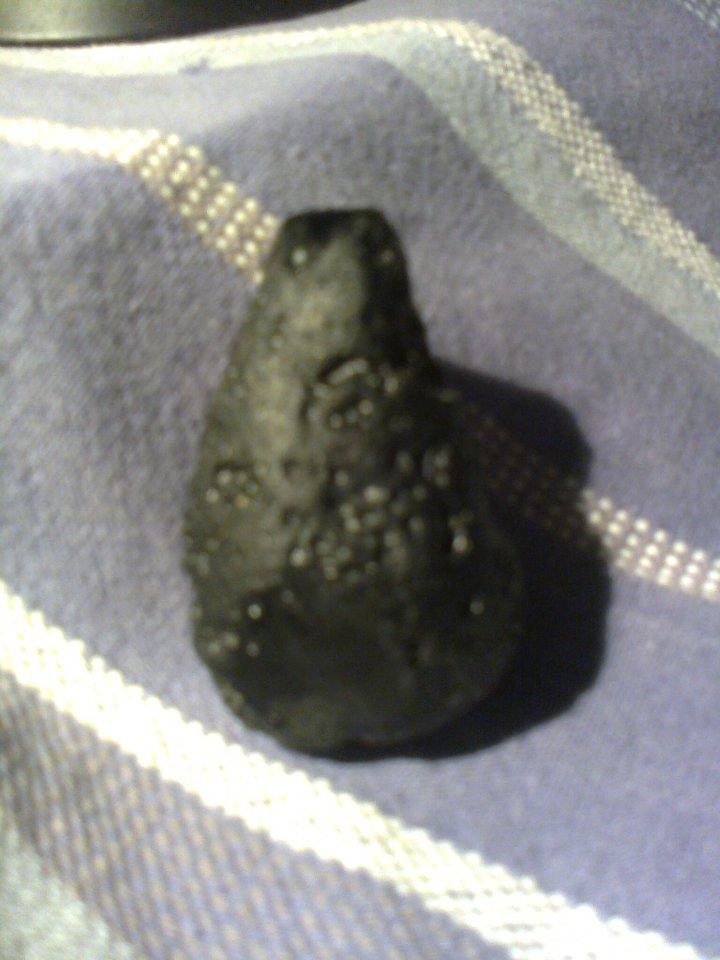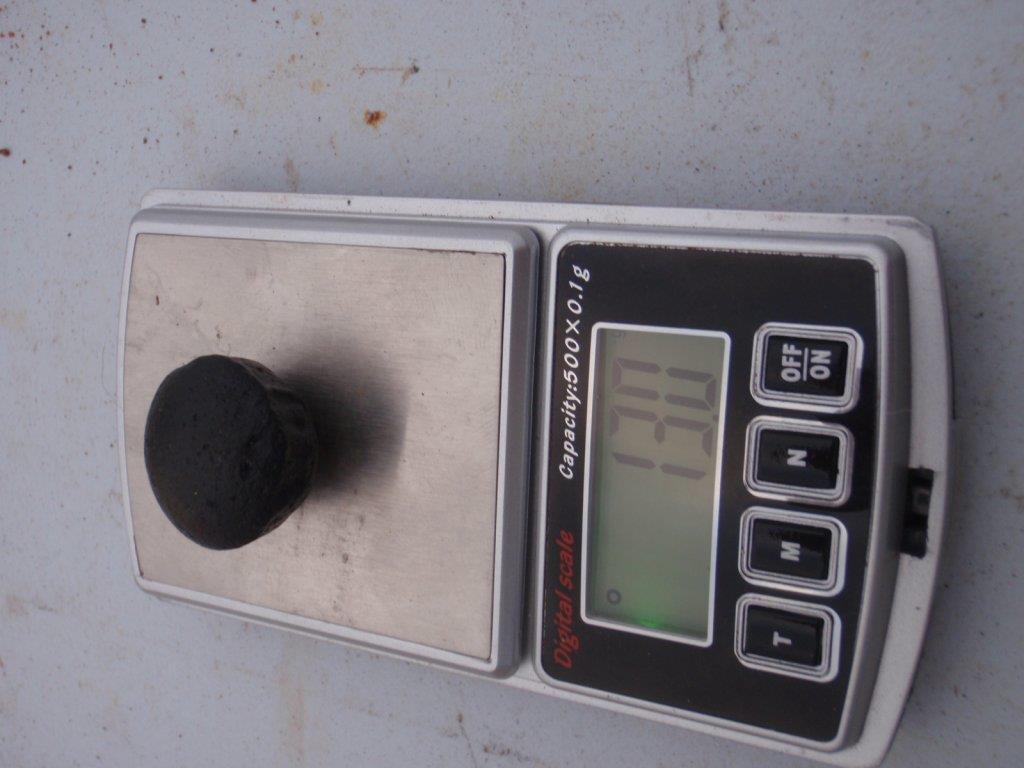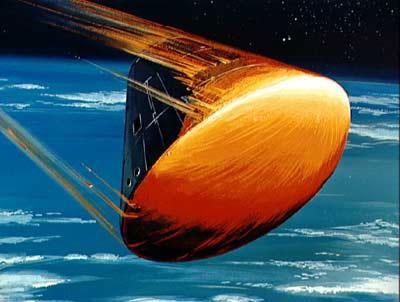headbut
Paul
This is a Indochinte Tektite & is 700,000 years old.
They are formed when a meteorite , usually of substantial size , hits the earth. The surrounding rock is melted on impact and is ejected into the upper amothsphere, where they cool very quickly & form these "teardrop" or "pear"shapes as they fall back to earth.

They are formed when a meteorite , usually of substantial size , hits the earth. The surrounding rock is melted on impact and is ejected into the upper amothsphere, where they cool very quickly & form these "teardrop" or "pear"shapes as they fall back to earth.






